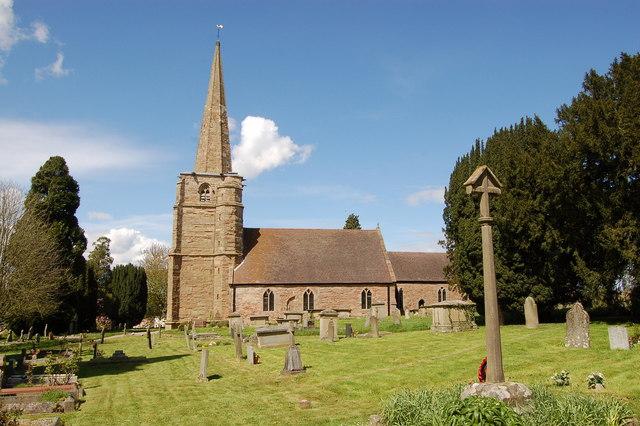St John the Baptist
Upton Bishop, Herefordshire
St John the Baptist is a beautiful church in the Herefordshire village of Upton Bishop, it provides a quiet space for contemplation and has regular services and events.

St Mary’s church sits high in the centre of Linton amidst glorious Herefordshire countryside and has a fascinating history.
Linton, Herefordshire
We know from the Domesday Book that Linton was an important Saxon settlement with a royal manor. Pre conquest, this area had converted to Christianity in the 6th century but it also nestled on a turbulent Welsh border. Indeed, the imposing church tower was added as part of Edward III’s border defences. Today, our church reflects a Victorian renovation but it is a complex building rewarding visitors with the unexpected.
Deciphering the history of the church is fraught with difficulty. The original Saxon church has been consumed by later building but visitors are guaranteed a feast of architectural styles and conundrums.
Pevsner dated St Mary’s to around 1150 but diocesan records indicate a slightly later start in 1200 with the subsequent additions of a 13th century chancel and porch, and a 14th century tower. Evidence still exists in the nave of the earlier tower and tufa in the oldest columns may have been sourced from the Roman settlement, Ariconium.
Strangely, the west window is out of alignment with the nave and part of a Norman archway in the south wall suggests a porch and south aisle much older than Pevsner envisaged. A number of former roof lines are visible on the east nave wall where the building of the chancel necessitated blocking two lancet windows.
William de Baderon was Lord of Linton and a major patron of the Herefordshire School of Romanesque Sculpture. Surprisingly, St Mary’s has no features ascribed to this movement. It could be that the church was one of many destroyed in reprisal by King Stephen’s forces in the first English Civil War as this area, and especially de Baderon, staunchly supported Queen Matilda. The medieval preaching cross in the churchyard, renovated in 1920 as the village war memorial, was surely a witness to these tragic times?
St Mary’s today appears very much as it emerged in 1876 after its transformation by the Reverend Edward Palin (Great-Grandfather of national treasure Michael Palin). All lime wash was removed. The church was gutted internally and reequipped with new pews, font and pulpit. He was vicar for 38 years between 1865 and 1903. He also built a new village school (now the village hall), a Neo Gothic vicarage and brought water to the village.
Leave yourself time to do the churchyard trail. You will see Edward Palin’s grave and what many experts believe is the oldest tree in England, the Linton Yew! In spring enjoy the display of snowdrops.
Upton Bishop, Herefordshire
St John the Baptist is a beautiful church in the Herefordshire village of Upton Bishop, it provides a quiet space for contemplation and has regular services and events.
Weston-Under-Penyard, Herefordshire
Oxenhall, Gloucestershire